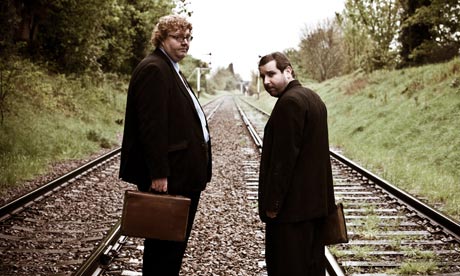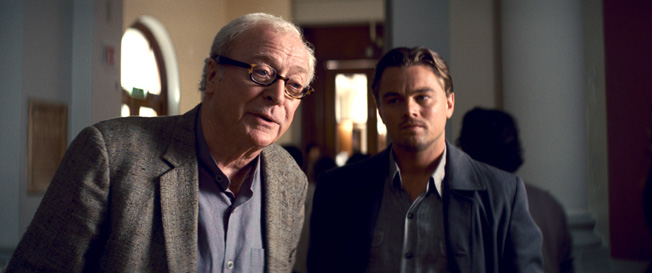I was going to write just about Splice, but I just watched Monsters and, thinking back to other recent films, like Sunshine, there's definitely something going wrong here. spoilers ahead!
All these films seem to be half good. I'll start with Splice, which I watched in a strangely, thematically, appropriate double bill with Fishtank.
The premise of Splice - sidestepping the actual 'science' - is Frankenstein, but with a happy couple instead of a weird student doctor. Two co-habiting gene splicers decide to push the technology to the limits and throw some human genes into the mix. Of course, it's all the stupid woman's idea, but never mind that, what they create is a growing-too-quickly mutant girl, surprisingly human. As the plot unfolds, we learn that the woman of the pair had a difficult relationship with her mother - possible case of neglect and/or emotional abuse - and while initially loving of the creature, begins to play out her parent. The man starts off sceptical - in fact, tries to kill it several times - but soon warms and admits he loves the weird little thing. Up to this point, I loved this film. It was dealing with nature and nurture in an interesting way, it was dealing with a mother-daughter relationship (which is rare as hen's teeth in the father-son-obsessed mainstream cinema world, see Inception below), and it was dealing with the ethics of letting things get too far.

And then it all went Woody Allen, when the man shags his, let's face it, adopted daughter (being seduced by her does not let him off the hook). And then, after it dies, it inexplicably comes back to life as a man and rapes the woman, it's mother. What this says about the writer/director of the film's view of the world, I'm not too sure - possibly that all men want to kill all other men, and all women want to sex all men. The Long-Suffering Girlfriend pointed out how unpleasant it was that men get to be seduced while women get raped. The film was great until the sex got in there; I'm not saying there shouldn't be films about sexual abuse and it's consequences, and you should definitely watch Fishtank for evidence. But Splice started off with a great story, then threw it out the window in order to make space for some alien sex scenes. Is Xenopaedophilia a word? It is now, thanks to Splice.
Then we come to Monsters, which is like heart of darkness but with no characters. It owes most, absolutely and definitely, to Stalker; a perilous journey across an alien-infected zone, on a budget so low that real ruins are substituted in for sets and the beauty of nature is explored and the influence of the aliens is felt obliquely and in the periphery. The main difference is that while Stalker felt like three philosophy students walking slowly across the landscape, Monsters feels like two gap-year dickheads. The conceit of the film is great, I don't argue with the vision, the style, or the use of limited budget to achieve something personal.

But she's a drip, he's just any bloke. There's no charisma between them, such that the ending where they kiss feels like a surprise. oh and there's the father-son bullshit again. It feels quite a lot like jurassic park, partly because of the scenery and the threat from massive things, but mainly because the couple have the sexual charisma of the children in that film (I MEAN NONE). A lot is made of the improvised dialogue, bringing comparisons to Mike Leigh, but while Mike Leigh joints have dialogue and scenarios that have erupted from weeks of intense character study, the dialogue in Monsters feels genuinely just improvised, in the way that they couldn't think of anything interesting to say. They just amble about like blankly yawning wildebeest. Or, as I said above, students on their gap years, with inexplicably long-lasting hairspray.

Sunshine could have been great, I was really enjoying the way that the creators had wreaked enough drama out of these people just doing their misson; up until the point where it turned into a slasher film for some reason. Actually, I got a lot more out of the film with Brian Cox's commentary track, as he explained how the sun was driving them mad, and what happened to the other captain could have happened to them, but I just lost interest in the film and missed what happened at the end (despite it being on in the room), and it's a pretty clear failing of the finished film when you need the commentary track to enjoy it.
Splice and Sunshine both have great ideas, but squander them in a lazy attempt to attract attention through (sex and) violence. Monsters justifies it's brief moments of horror (spoiler: it's called monsters), but it's failings are more to do with the actors, or perhaps the director's misguided approach to improvised acting.
Positive note: cest scifi film i've seen for a long time, then, is Skeletons. you'll love it.

I just want to mention Inception briefly here, as it is a sci-fi, and was quite good. However, it stakes the need even more clearly for a reverse Bechdel Test: one that tests for father son relationships in films (the other all-time great father-son film is National Treasure). Here's a breif outline to give you the flavour:

The Protagonist (di Caprio) of the film is estranged from his son. The protagonist followed in his father (Caine)'s footsteps into the dream-hacking industry, which apparently they teach at university.
The target of the film is also estranged from his father, and works in the family business. The plot of the film is to plant an idea into the target's head, that he wants to start his own business; they do this by convincing the target that his father secretly loved him, despite the tough charade.
The protaganist succeeds, therefore uniting him with his own father, and his son, and putting the target's mind at ease about his father's death.
It's like Noland thought, i've got this idea for a really big clever expensive film, but the only way i'll convince anyone in hollywood to make it is if I put hyper father son relationships into it - at least three should do it.
There are two women in the film.
They speak to each other.
About a man. ("the whole conversation is about how mal needs cobb in her life to feel whole. and that few seconds is basically the only female-to-female conversation in the ENTIRE movie. i'd call this one a pretty clear fail.")
Sample questions for father-son test:
Does the son follow in the footsteps of his father's career?
Is the father estranged from his son?
Is the father too busy to see the son?
Is there a phonecall between the father and son on the son's birthday?
Is the relationship resolved in the course of the movie?
does the father die?
i'd love to see this test implemented.
